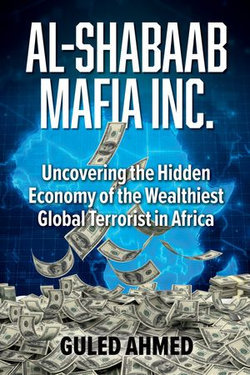This study examines Al-Shabaab's overall economy based on conducting an appraisal of the existing research including published reports by the UN and forensic auditing analysis to identify gaps in actual projected Al-Shabaab revenue what is estimated vs what their actual revenue by invigorating neglected revenue sources such as Hashis revenue, weapons, drug and human smuggling, gold mining and trade, livestock, and farming extortion, custom revenue both inland and ports and realistic illegal checkpoints revenue. In addition, we have added in our study money laundering revenue as a result of investing in legitimate businesses and calculating the rate of return to determine the true wealth of Al-Shabaab Mafia Inc. The analysis frames Al-Shabaab as a sophisticated organized crime syndicate, rather than simply a "jihadist" group, drawing parallels to the Sicilian mafia's origins as private security forces. Exploiting governance gaps and fostering insecurity, Al-Shabaab has expanded its racketeering operations, including targeted violence and extortion. This groundbreaking study examines the true wealth of Al-Shabaab Mafia Inc which is determined by measuring how Al-Shabaab generates capital and assets through extortion and profit sharing of illicit activities with the criminal cartel, and money laundering to settle their liabilities for operation and maintenance that allows facilitating terrorism financing and difference results in equities which are invested through legit business that generates a rate of return on investment ranges between 98% to 112% ( while UN estimate is 80%)1 and GDP of $2.2B and GDP per capita of $60k makes them the most wealthiest global terrorist group in Africa. This study also examines selected Al-Shabaab main leadership illicit business and earning. Furthermore, this study examines the financial institutions and state governance challenges and shortcoming to deterring money laundering and terrorism financing and provides concrete recommendations. Key findings: a) After a thorough examination, it has been found that Al-Shabaab's yearly income peaked at an astonishing $2.2 billion in 2022, but decreased to $1.65 billion in 2023 due to the ongoing war against them. Al-Shabaab generates its wealth from three main sources: extortion, illicit activities, and investments. However, this alarming figure has likely been underestimated over the past ten years due to limited data and insufficient scrutiny of their various revenue sources. b) Al-Shabaab's revenue is nearly seven times Somalia's domestic revenue for 20232, and 2 times the country's annual government budget for 20243, which is $1 billion. c) It is concerning that Al-Shabaab's annual revenue accounts for 20% of Somalia's GDP for 2023, estimated at $10.9 billion according to the IMF4, with a per capita GDP ranging from $52,000 to $60,000. The economic impact of this criminal organization on the country can no longer be overlooked. d) Al-Shabaab generates 46% of its revenue from investments in legal activities through money laundering, amounting to $759.5 million. Approximately 30% of their revenue, or around $494 million, comes from illicit activities, while 25% of their revenue, around $402 million, is generated through extortion. e) While most published studies led by the UN indicate that Al-Shabaab's primary revenue source is illegal checkpoints, our study shows that revenues from illicit activities and extortion are more balanced: 25% from extortion-related activities, followed by agriculture and livestock, illegal checkpoints at 23%, and 22% respectively. f) The top five leaders of Al-Shabaab collectively earn over $25.9 million annually.



Share This eBook: